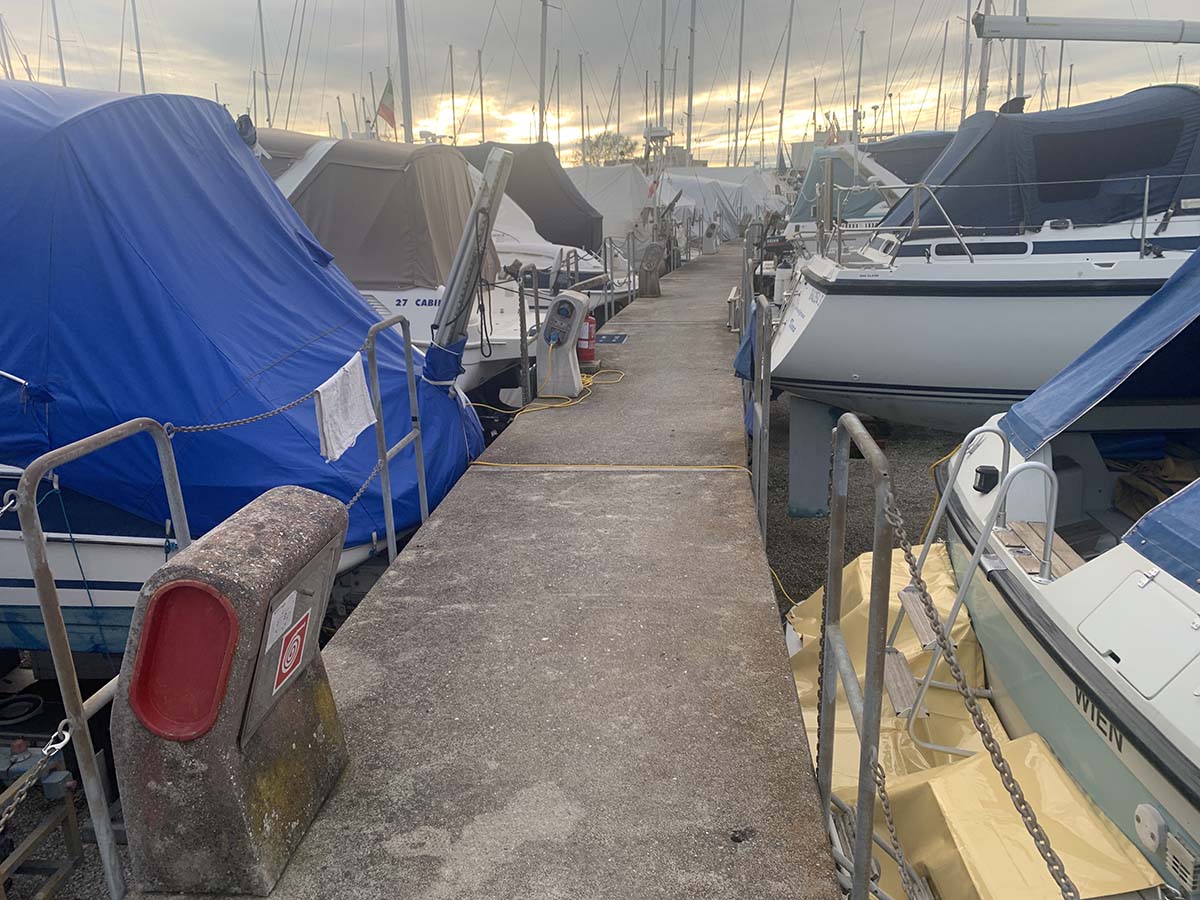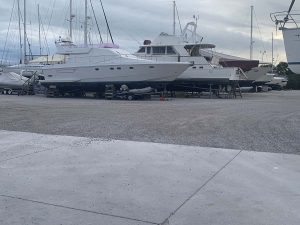
What Does The Future Hold For The Marina Owner?
Published on November 4, 2024The marina industry is facing numerus challenges, opportunities and changes, and the marina owners are the ones who have to deal with them.
COVID-19 brought a massive surge in demand for boating, and marinas reaped the benefits. They were full, and waiting lists began to spring up. Marinas were able to raise prices, and the increased revenue streams allowed many to undertake various upgrade projects. Current demand, however, while still fairly strong in most areas, has definitely softened from its pandemic high. As one takes a good look around as well as toward the horizon, it appears there are certain niches that are clearly doing better than others.
Niche Markets
The niche markets have always been stronger in downturns. Such markets for specialty sports-related activities, including wakeboarding and waterskiing as well as lake and deep-sea fishing, continue to have interest. Also continuing strong are high-end sail and cruising boats.
When boom times hit, many seem to forget that marinas and boating are tied to the overall economic changes that typically are cyclical. The tide rises, but the tide falls. Adding to the mix is that the number of “diehard” boat owners continues to decrease, with many newer owners having a lesser affiliation and little to no tolerance with things going wrong. If the boat has a problem – just sell it. While not overly prevalent, this, unfortunately, is truer than anyone in the industry desires. Today’s boater typically has a lesser desire to stay in boating than the older traditional boater who would stay with and keep boating for decades, no matter what.
This has led to an increased market for used boats and, post pandemic, many boaters are now looking for bargains. During COVID-19 there were no bargains, and bidding wars developed. Today, more negotiations are the norm. Long term, we can expect that to continue, with fluctuating intensity, due to higher turnover rates.
As we were coming out of the pandemic with high demand for boating, I kept asking marina owners and managers about what they were doing to keep boaters. The majority sort of smiled and suggested that there was a boom market, and they did not have to do anything, or at least not much. After all, they were full and had waiting lists. It is easy to forget in the boom times that things can, and usually will, slow down. I’m a firm believer in establishing programs, events and activities that appeal to boaters in your particular area. It is important to keep their interest up, particularly with the many other demands on everyone’s leisure time. It builds customer appreciation and loyalty, and not just to your facility, but to boating. As an added bonus, those happy and loyal customers will become your best advertising.

Marina Investing
The marina industry grew up with many, perhaps mainly, family operated facilities. While there are many who are continuing that tradition, many families are finding that their kids or other younger family members are looking to pursue other interests, and not take over the family business.
The COVID demand brought along higher interest in marina ownership and attracted capital looking for investments. “Wall Street” money increasingly flowed in, courting the existing marina companies as well as others in the industry to start new chains, presenting bigger opportunities for both new and existing companies to purchase facilities. This has and continues to present desirable exit strategies to some of those family-owned facilities without the desired next generations to follow, and some even bigger windfalls for owners of existing chains being taken over by even larger chains. It also brought reasonable opportunities to independents to obtain funds for much needed upgrades, as well as opportunities for new folks to take the leap into marina ownership, whether Wall Street types, those seeking a lifestyle change or those who have long had the deep-seated desire to experience the joys of owning a marina – or two or three.
Not surprisingly, all this demand does mean that prices for marinas, regardless of how one measures them, have been on the rise and seem to continue. Is there a rationale for the prices being paid? Obviously, there must be, though current prices do appear to be a bit on the high side when compared to the net revenue side.
In the near- to mid-term, there is little doubt that consolidation will continue, and the chains will continue to grow, with their sights particularly focused on the more strategically located as well as niche marinas. Long-term, as the number of facilities ripe for picking lessens, the appetite for acquisition is likely to translate to more chains looking at the international market, in which some of the larger chains are already participating or actively examining.
Prices and Amenities
Many of the chains have been successful at raising prices, and as you may have noticed, I’ve been saying for decades that marinas traditionally underprice their services. At the same time, one has to be more attentive to customer desires and attitudes.
Some of the chains do seem more intent on running the facilities through the financial statements without maintaining the quality service and “feel” of the facility, and/or the personal attention typical of the traditional family-operated facility. Yes, these are generalizations that will be disputed by most managements, and there are notable exceptions. However, with investment-style ownership, the rate of return and profitability are not uncommon to be the ultimate priorities.

On the flip side, chains tend to bring with them increased investment upgrades and economies of scale, including on big ticket items, back of operation and insurance premiums.
With careful thought, there are many opportunities for both independents and the chains to prudently move into new income-producing activities that are of interest to their existing and/or desired new customers. Such activities as offering rental and/or storage for personal watercraft, paddle boards and kayaks have been highly successful, as well as various novel approaches to house more traditional boats. One such variation I recently came across while reviewing a facility in Italy was to offer on the ground upland storage for large boats that is arranged in a manner where they can be readily launched and retrieved as the customers desire, but also allows the customers to stay aboard their boats on the dry – complete with utilities hookup, including sewage. It’s been hugely successful for them, with the market primarily being boat owners who live some distance away who sometimes want to head out on their boats, but who often are using their boats as a vacation home on the waterfront. They clearly have found a niche market.
Another novel idea recently encountered involves setting up planter boxes at the entrances to the docks that are planted with various herbs, which can be picked by the customers to spice up their meals and snacks on the boat. The project has been quite successful, with a noticeable uptick in time spent aboard, and goodwill toward the marina – though they do need to keep refreshing the sometimes-over-harvested plant supply.
Of course, one size does not fit all – so one really needs to think through ideas and their implementation relative to the location, physical constraints and unique market.
In this era of so much consolidation, it is exciting to see the many innovative approaches being undertaken by new independent owners. They tend to take a meaningful property, rethink the operation and, as one new owner said, “Bring it into the next century – just a little earlier.”
What’s on the Horizon
As we move forward to the future, there is a growing awareness and desire for being more environmentally responsible, which many are translating to going to electric boats. There is no question that boat manufacturers are moving in that direction. It is important to include a word of caution, though, as making provisions at one’s facility for electric boat charging is definitely not as simple as it often is portrayed. We will address the issues in a subsequent column, but for now would suggest that marina owners and operators educate themselves as much as possible on the topic.
The regulatory community is also looking for marinas to be even more environmentally conscious as part of the project design, permitting and approval process. Incorporating environmental enhancements where possible and meaningful is essential, and a key word now is resiliency – though what the regulatory world considers resilient and what those in the marina world consider resilient may not always be aligned, and many of the new regulations being rolled out on resiliency are looking overly cumbersome and often unrealistic.
The Cost of Boating
Turning to the rising costs of boating, we still urge and are hopeful that boat manufacturers will introduce more meaningful ways of lowering the costs for entry level boaters. While the high-end boats are continuing to be strong in sales, the backbone of the industry is also in numbers and bringing more people into boating. Having more affordable entry level boats is just one way to accomplish this. The automobile industry has seen major gains in undertaking this approach, and that does not stop the dealers from trying to upsell prospective buyers’ interest towards more expensive models. Getting the boater into the showroom, or more importantly, staying on the internet page and keeping the prospective buyer looking, is important to the future of both the manufacturers as well as the marinas.
Manufacturers also need to do a better job in quality control as well as using interchangeable parts, which lowers the likelihood and frequency of repairs, and the cost of parts needed for service. Nothing turns off a boater faster than something going wrong with their boat and not being able to use it when they want to.
Of course, nothing turns on a boater faster than a bit of smooth sailing … or fishing, or waterskiing, etc. And when marina owners are tuned into their customers and really help make that happen, just about everyone ends up happy.
Dan Natchez, CMP, is president of DANIEL S. NATCHEZ and ASSOCIATES Inc. He can be contacted by phone at 1/914/698-5678, by WhatsApp at 1/914/381-1234, by email at dan.n@dsnainc.com or online at www.dsnainc.com.
| Categories | |
| Tags |





